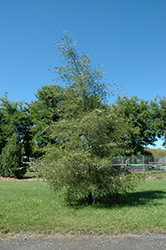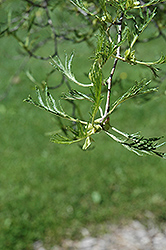Imperial Common Alder
Alnus glutinosa 'Imperialis'
Height: 50 feet
Spread: 30 feet
Sunlight:
![]()
![]()
Hardiness Zone: 4
Other Names: Black Alder, European Alder
Description:
A very special tree valued for its finely cut leaves, giving almost a ferny appearance; a great accent tree for small properties to offset coarse foliage plants
Ornamental Features
Imperial Common Alder has rich green deciduous foliage on a tree with an oval habit of growth. The deeply cut ferny leaves do not develop any appreciable fall color.
Landscape Attributes
Imperial Common Alder is an open deciduous tree with a shapely oval form. It lends an extremely fine and delicate texture to the landscape composition which can make it a great accent feature on this basis alone.
This is a relatively low maintenance tree, and is best pruned in late winter once the threat of extreme cold has passed. It has no significant negative characteristics.
Imperial Common Alder is recommended for the following landscape applications;
- Accent
Planting & Growing
Imperial Common Alder will grow to be about 50 feet tall at maturity, with a spread of 30 feet. It has a low canopy with a typical clearance of 4 feet from the ground, and should not be planted underneath power lines. It grows at a fast rate, and under ideal conditions can be expected to live for 50 years or more.
This tree does best in full sun to partial shade. It is quite adaptable, prefering to grow in average to wet conditions, and will even tolerate some standing water. It is not particular as to soil type or pH. It is somewhat tolerant of urban pollution. Consider applying a thick mulch around the root zone in winter to protect it in exposed locations or colder microclimates. This is a selected variety of a species not originally from North America.

